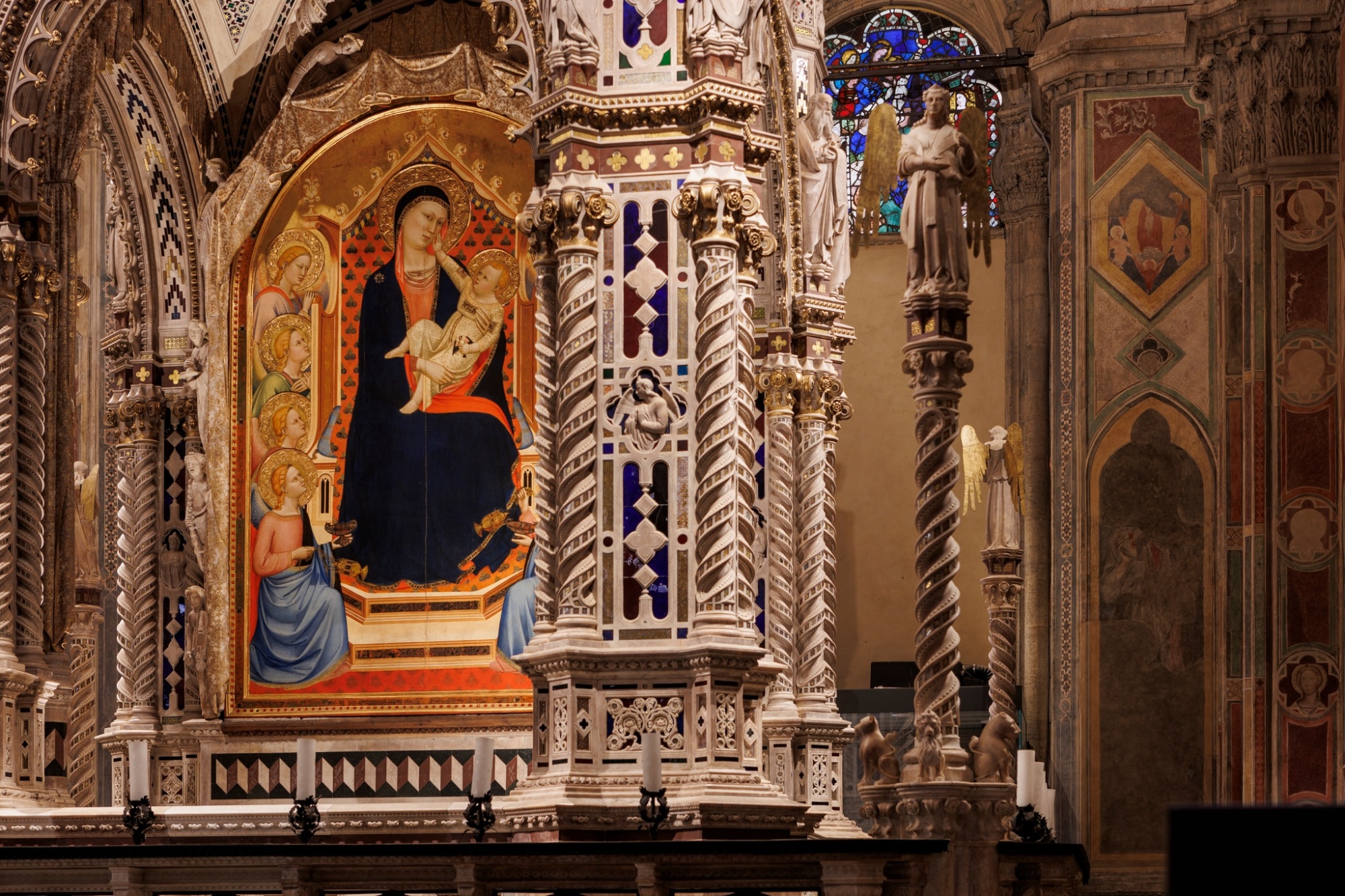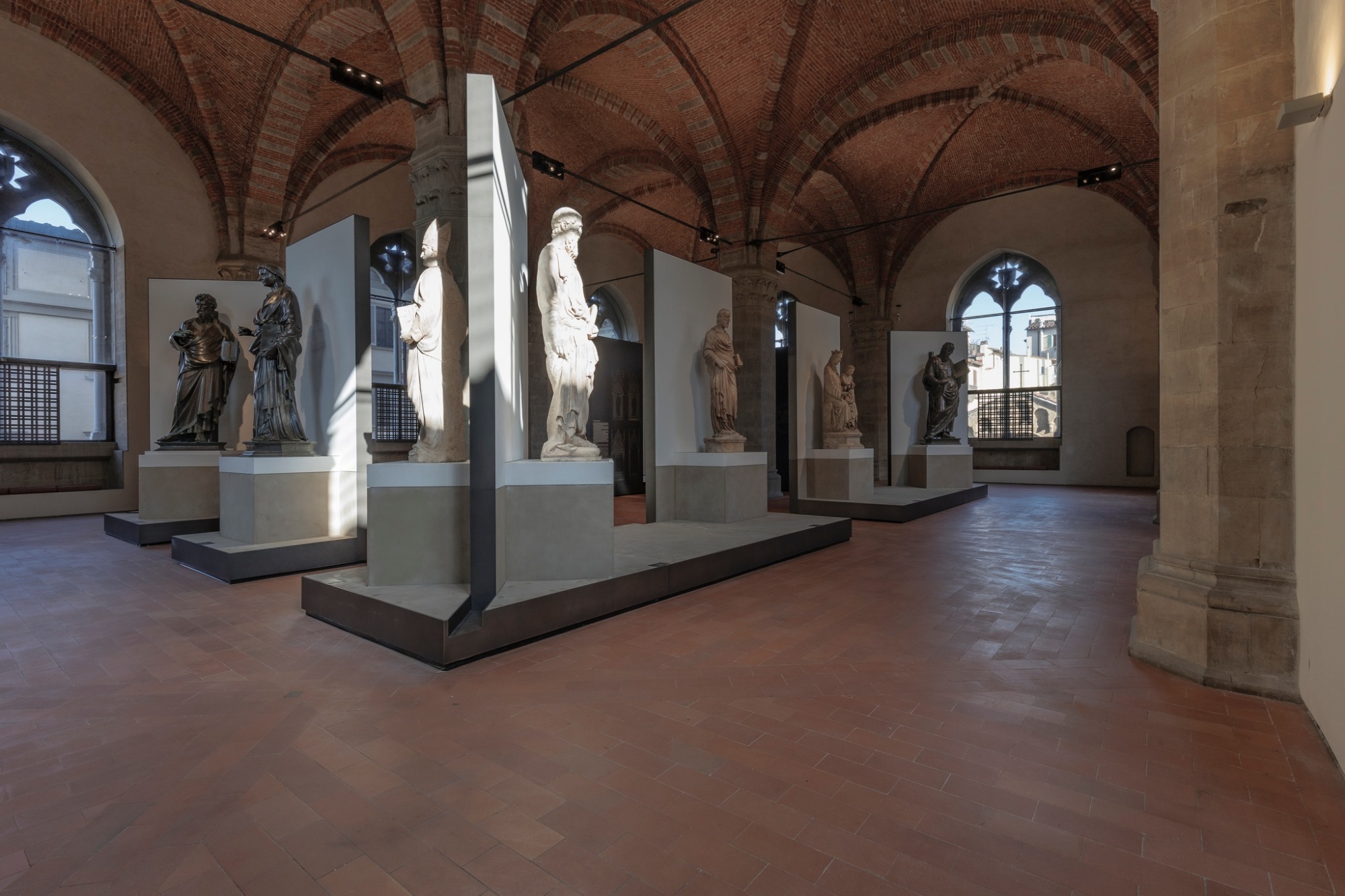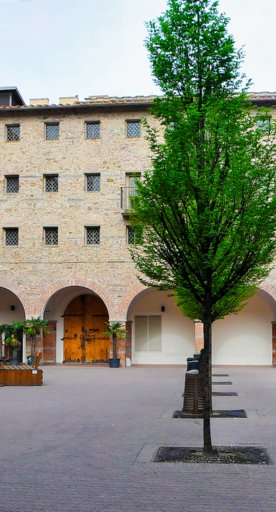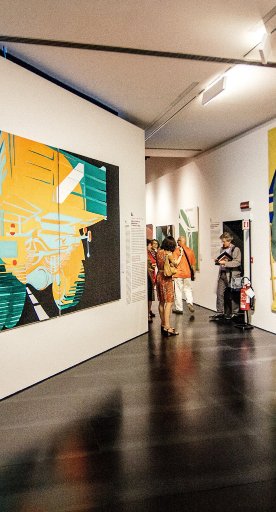Church of Orsanmichele and Museum
In the center of Florence, an extraordinary church and a museum that houses sculptural masterpieces by the most important Florentine artists of the Renaissance
In the center of Florence, along Via Calzaiuoli, on the site where once stand a women’s monastery with land used as a vegetable garden, a small church dedicated to St. Michele Arcangelo (Michael the Archangel), called San Michele in Orto (hence “orto di San Michele” (St. Michael’s vegetable garden) and then “Orsanmichele”), was erected around the middle of the 8th century.
In the thirteenth century, the church was demolished to make way for the grain market: the initial loggia structure was destroyed by fire in 1304 and replaced by a rectangular building with two additional floors, an actual storage place. Later, it became a place of worship again, thanks to the generosity of the Arti, the Florentine guilds, which adorned the church with sculptures and paintings of the highest caliber between the 14th and 16th centuries.
Visible on the exterior facades are large medallions containing the coats of arms of the Guilds that owned the tabernacle below. The best-preserved coats of arms are those in glazed polychrome terracotta, some made by Luca della Robbia (Guild of Judges, lawyers, and notaries, Guild of Master stonemasons and wood-carvers, the lily of Florence on the tabernacle of the Tribunale di Mercatanzia) and his nephew Andrea (Guild of Silk).
Today the building houses the Orsanmichele Church on the ground floor and the museum of the same name on the first floor, in which the originals of the sculptural works once found in the external tabernacles are preserved, replaced by copies for conservation reasons. The Orsanmichele Monumental Complex, a unique and extraordinary monument in which civil and religious functions are combined, reopened to the public in January 2024 after a massive restoration and rearrangement.
Orsanmichele Church

The interior of the church is a striking Gothic setting. The left altar features a marble group of “Saint Anne, the Madonna and Child” by Francesco da Sangallo (circa 1526). On the opposite side is a grandiose tabernacle by Andrea Orcagna, made in the mid-14th century to house Bernardo Daddi’s painting, “Virgin and Child with Angels” (1347), a work placed to replace Ugolino di Nerio’s “Madonna of Orsanmichele”, a miraculous image that was probably lost in the fire of 1304.
Columns and vaults are completely decorated with frescoes from the late 14th century depicting characters from the Old and New Testament. In the glass windows placed on the lunettes of the triforas is a cycle depicting Stories and Miracles of the Virgin and the miraculous image of the Madonna of Orsanmichele.
Orsanmichele Museum

The first floor contains the originals of 13 of the large statues that once adorned the four sides of the building, commissioned by the various Florentine Guilds. These include true masterpieces by the most important Florentine artists of the Renaissance: Donatello (St. Mark and St. Peter), Andrea del Verrocchio (Incredulity of St. Thomas), Lorenzo Ghiberti (St. John the Baptist, St. Stephen and St. Matthew), Nanni di Banco (St. Giles, St. Philip, Four Crowned Saints), Baccio da Montelupo (St. John the Apostle), Giambologna (St. Luke), and those of the 14th century by Piero di Giovanni Tedesco (Madonna of the Rose) and Niccolò di Pietro Lamberti (St. James the Great).
The second and last floor is accessed via a spiral staircase. Here, in addition to the small stone sculptures depicting saints and prophets that were originally placed outside on top of the small columns that punctuate the triforas and the two portals, an incredible panorama of Florence can be admired.
Accessibility information: bargellomusei.it










